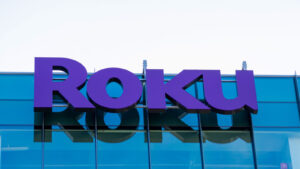In line with my long-held thesis, the U.S. economy is performing very well and growing quite rapidly, defying the bears’ baseless belief that it was poised to enter a recession. Similarly, according to my previously articulated ideas, inflation has eased, and the Federal Reserve has been much less hawkish than the bears.
But that doesn’t mean that stocks will necessarily have smooth sailing over the long term. Among the issues that could cause major problems for stocks in general and growth stocks in particular are a reacceleration of inflation, a widening of the war in Ukraine, a Chinese invasion of Taiwan, and even civil strife within the U.S. Typically, during such crises, growth stocks are hit the hardest. Consequently, in case an unforeseen crisis does occur, your portfolio will hold up much better if strong, stable stocks form a significant portion of your portfolio.
Investing in stable stocks is particularly important for older investors. That’s because those who are nearing retirement may need to sell equities within a year or two. As a result, if stocks do slump, they’ll be much worse off than younger people who can wait many years for equities to recover before selling their holdings.
With that said, here are seven strong, stable stocks to buy.
MGM (MGM)

MGM’s (NYSE:MGM) inclusion on this list may be surprising to some, since gambling is technically a discretionary activity for consumers. However, because gambling is such a fun, engrossing, enjoyable activity that many people of all ages love, I believe that MGM will always have a huge number of customers. And the firm’s exposure to online casino betting and online sports betting through its successful joint venture, BetMGM, will enable it to generate profits from tens of millions of American gamblers while they’re at home.
With more states legalizing online gambling every year, MGM is sure to start raking in tremendous profits from BetMGM within a year or two. And given the tremendous allure of online betting, BetMGM is likely to be profitable even when the economy is struggling.
Finally, Las Vegas is constantly adding new attractions and has become one of America’s top vacation cities. Even during an economic downturn, many Americans and many citizens of other nations are likely to visit the city, benefitting MGM, which owns many casinos there.
NextEra Energy (NEE)

Everyone still uses electricity during recessions, and an economic downturn is unlikely to meaningfully derail the electrification of transportation trend in light of the U.S. government’s huge investments in the phenomenon. Given those points, NextEra Energy (NYSE:NEE), which owns multiple utilities in Florida and produces electricity through solar energy and wind turbines, is definitely one of the best, strong, stable stocks to buy at this point.
Two other positive catalysts for NEE stock are the proliferation of data centers which utilize a great deal of electricity, and climate change which is making summers hotter. It caused consumers in Florida, where most of the customers of NextEra’s utilities are based, to use more electricity to power their air conditioning.
Also noteworthy is that last month, Goldman Sachs named NEE as one of five utilities that are likely to benefit from increased investments in the U.S. power grid. Since these investments are likely to be primarily carried out by the government, they’re unlikely to be derailed by economic downturns or adverse geopolitical events.
Roku (ROKU)

Roku (NASDAQ:ROKU) is another pick that will probably shock many readers because the name has been so volatile in recent years.
But clearly, smart TVs are the future of television, and Roku is the future of smart TVs. For evidence of the latter assertion, consider that Roku’s overall U.S. “TV unit share” reached a record high of 43% last quarter.
Sooner rather than later, the Street will realize the extent to which Roku’s large share of the TV market will ultimately enable it to deliver tremendous growth and superb financial results. The latter process may have begun, as ROKU stock had soared 88% this year as of July 13.
Also likely to make ROKU a solid, reliable performer over the long term are the deals that it will make with tech companies, retailers, and others. In the latest example of this phenomenon, Roku recently announced a deal with Shopify (NYSE:SHOP) that will enable the e-commerce giant’s vendors to advertise on Roku.
PayPal (PYPL)

PayPal (NASDAQ:PYPL) has become an integral part of the digital payments sector, whose size is continuously expanding and will continue to do so whatever happens to the economy and in geopolitics. Moreover, as more consumers around the world have access to broadband internet, that trend should accelerate greatly. Consequently, PayPal, despite its volatility during the 2022 bear market, belongs on this list of strong, stable stocks.
Showing the strength and rapid growth of PayPal’s business, outgoing CEO Dan Schulman recently noted that PayPal’s annual free cash flow “more than tripled” during his nine-year tenure to more than $5 billion, while its annual revenue has reached $30 billion.
And as I pointed out in a previous column, PYPL “expects its earnings per share to expand at a compound annual growth rate of over 20% this year to nearly $5,” and will likely get a big boost from the revival of e-commerce either in the second half of this year or the first half of 2024.
Visa (V)

Visa (NYSE:V), of course, is an integral part of the world’s payments infrastructure and is benefiting from the continued global transition away from cash. Moreover, given the company’s huge size and reach, it will always generate huge profits, barring a truly cataclysmic event.
Additionally, Visa has multiple, “massive,” relatively new growth engines, including digital person-to-person payments, “cross-border remittances,” and its foray into the payroll space, CFO Vasant Prabhu explained in a presentation on May 31. Visa also plans to grow by launching a number of the services it provides in the U.S. to other countries, the CFO explained.
Also noteworthy is that Barron’s recently called Visa “strangely undervalued,” contending that “there may be no greater big business out there than payment processing.” The publication also reported that Visa’s valuation is 30% above that of the S&P 500, versus “its historical average of roughly 60%.”
Freeport McMoran (FCX)

The long-term outlook for copper miner Freeport McMoran (NYSE:FCX) appears to be very bright, as copper is an integral part of both electric vehicles and solar panels. Moreover, China, which uses a great deal of copper, has been very effective over the years at preventing economic downturns through stimulus measures.
Meanwhile, Citi recently predicted that copper prices would surge to $12,000 per metric ton in 2025, up from an average price of $8,400 per metric ton last month. Among the factors cited by the bank for its bullishness on copper were stronger “global growth,” the metal’s liquid nature, and its exposure to the green energy revolution. According to Citi, “now is time to prepare to buy the metal on a medium-to-long-term hedging or investment basis.”
JPMorgan (JPM)

The world’s largest bank, JPMorgan (NYSE:JPM), is clearly thriving under the leadership of CEO Jamie Dimon, who always seems to make the bank’s many acquisitions successful and uses his extensive Washington connections very effectively.
Most recently, Dimon’s DC connections helped JPM buy First Republic earlier this year, giving JPM access to First Republic’s many high-net-worth clients. As a result of the deal, JPM increased the number of its wealthy clients by 10%.
The First Republic deal helped JPMorgan deliver very strong second-quarter results on July 14, as its top line soared almost 35% versus the same period a year earlier, and its net income soared to $14.47 billion from $8.65 billion during the same period a year earlier.
As of the end of Q2, JPM had $1.4 trillion in cash and marketable securities, giving it a huge cushion against any trouble it will face in the future.
On the date of publication, Larry Ramer owned shares of MGM and FCX. The opinions expressed in this article are those of the writer, subject to the InvestorPlace.com Publishing Guidelines.
